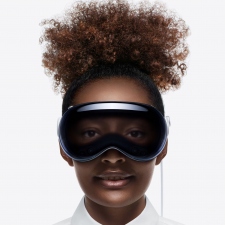Apple has cut its estimated shipment quantity for Vision Pro units in 2024 from 800,000 units to 400-450,000 units, according to Apple analyst Ming-Chi Kuo. The reduced figures are due to unexpected declines in demand just before the VR headset is set to launch outside of the United States.
Initial reviews of the “spatial computing” headset were mixed when it was released in early February. As the Vision Pro prepares to expand to more countries, Apple is taking a cautious approach to demand projections.
Kuo’s previous forecast suggests that Apple might introduce the Vision Pro in new markets before the June Worldwide Developers Conference, indicating availability in additional regions in the coming months. However, Apple is reevaluating its head-mounted display (HMD) product roadmap and may not release a new Vision Pro model in 2025 as initially anticipated.
Apple is focusing on production efficiency for the Vision Pro, with minimal changes to the user experience expected until 2027. This shift in strategy could lead to a decline in Vision Pro shipments in 2025.
The Future of Apple’s Spatial Vision
Following criticism of the device’s comfort, weight, and pricing, doubts have arisen regarding the feasibility of a second generation model in 2025. The lack of clear use cases and lower-than-expected sales could impact the adoption of lens and microOLED technology in future iterations of the product.
Notably, the number of available apps for the Vision Pro remains low, with only a fraction taking full advantage of the platform’s eye-tracking features. This poses a challenge for Apple in driving interest and engagement with its spatial computing device.
Uncertainty Surrounding App Development
Apple’s efforts to encourage app developers to create experiences for the Vision Pro have not seen significant results. While there are a modest number of apps available, the lack of innovative uses of eye-tracking technology could hinder the device’s long-term success.
Apple’s plans for expanding the Vision Pro beyond the US remain undisclosed. The company faces tough decisions regarding pricing and market positioning to drive adoption of its spatial computing technology.
Meta CEO Mark Zuckerberg has shared his perspective on Apple’s Vision Pro, highlighting the strengths of Meta’s Quest 3 headset in comparison. As the landscape of spatial computing evolves, competition and consumer preferences will continue to shape the future of augmented reality and virtual reality devices.


